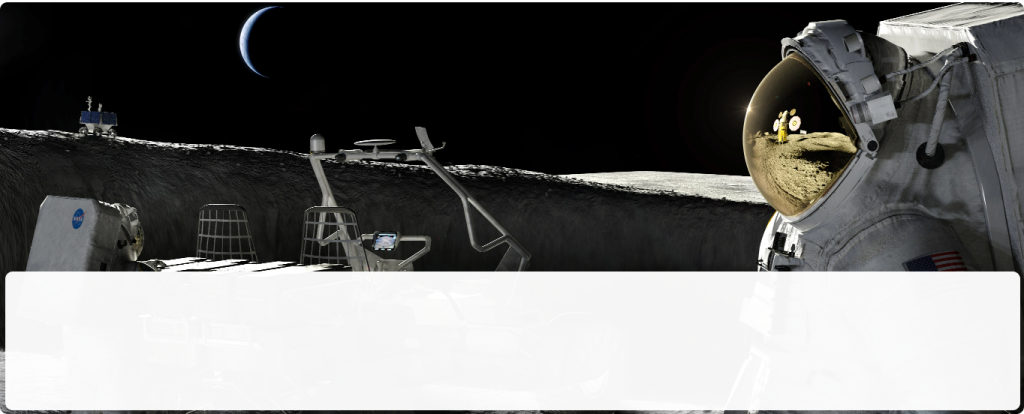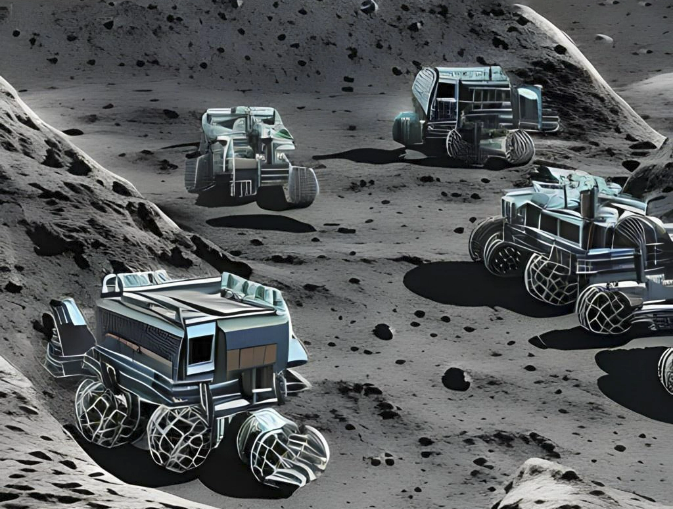Lunar Mining System
Lunar ISRU uses moon resources for space exploration and habitation. ISRU might be used in the permanent shadow zones, or polar craters. These places are of significance because to lunarice, which might be utilised for lifesupport and rocket fuel.Polar craters occur in permanently darkened areas(PSR)near the moon’s poles. These locations get little to no sunshine, making them quite chilly (-240°C). Despite extreme circumstances, remote sensing has found significantquantities of lunarice in these places.
Lunarice on the moon’s polar craters has significance for ISRU. Water is a life-sustaining resource that might be utilised on the moon. Also, water may be split down into hydrogen and oxygen for rocket fuel. This would make space exploration and settlement more sustainable and cost-effective by reducing the demand for Earth-made resources.
The lunarice in polar craters is difficult to remove and use. In these places, the hostile climate requires specific equipment and technology. The lunarice may be combined with dust and rock, which must be removed before usage.
Several initiatives are ongoing to develop ISRU technology and procedures for polar craters. One method is to employ robots or remotely driven vehicles to harvest water ice. Using heat to melt ice and collect water is another method.

Our Solution for Lunar Mining
A robust and reliable framework L-WATER (Lunar –Water Abstraction and Transportation byExcavation of Regolith) is developed in order to keep up with the steady flow of icy-regolith for extracting water. The team has recognized that not only excavating and transporting icy-regolith is crucial but also the water extraction has importance in order to keep up with the ISRU systems
The L-WATER technology is designed to be compatible with both NASA’s water extraction facility and our extraction method. It is capable of delivering 367 kg/hricy-regolith to the extraction plant. The on-board water extraction module extracts water from icy-regolith at a rate of 34 liters/day eliminating the requirement for an extraction plant. The L-WATER system satisfies the mission requirement of 27 liters/day while also delivering icy-regolith to extraction plant that can be processed if needed for additional water requirement. The team developed a two-stage plan to excavate and extract water from icy-regolith.

Features of L-WATER System
| Feature | L-Water |
|---|---|
| Landed Mass | 900 kg |
| Length(m) | 2 |
| Diameter(m) | 1 |
| Feature | L-Water |
| Mass flow for icy regolith | 367 kg/hr |
| Required Water Delivery | 12,410 for mission period(15 days) |
